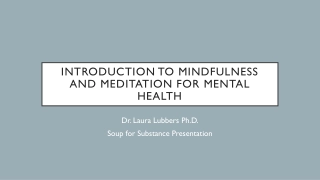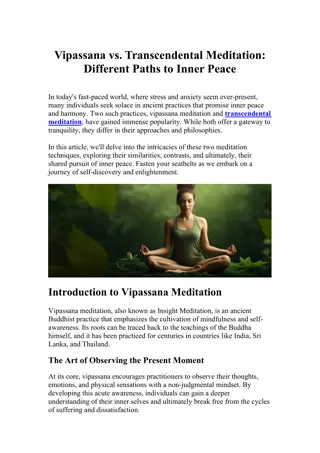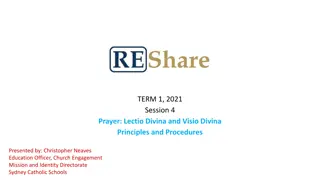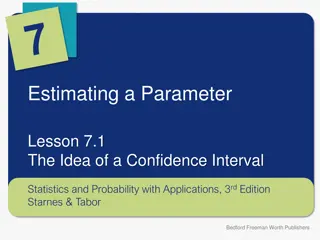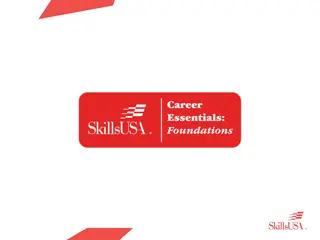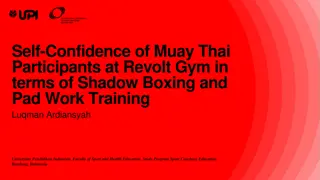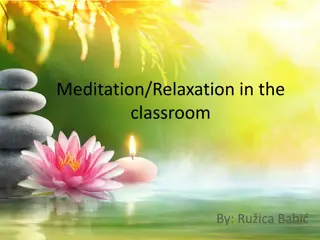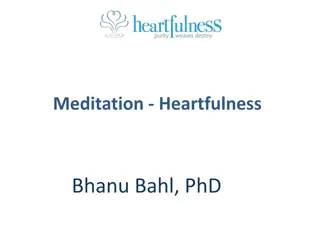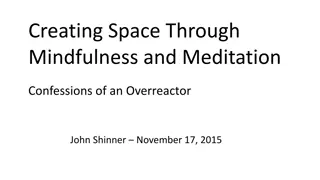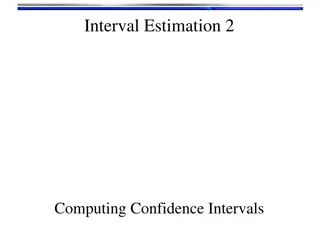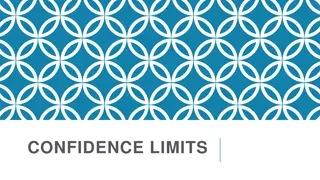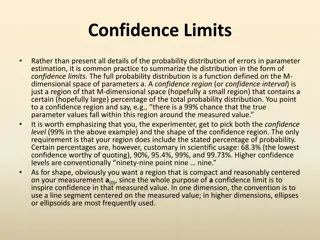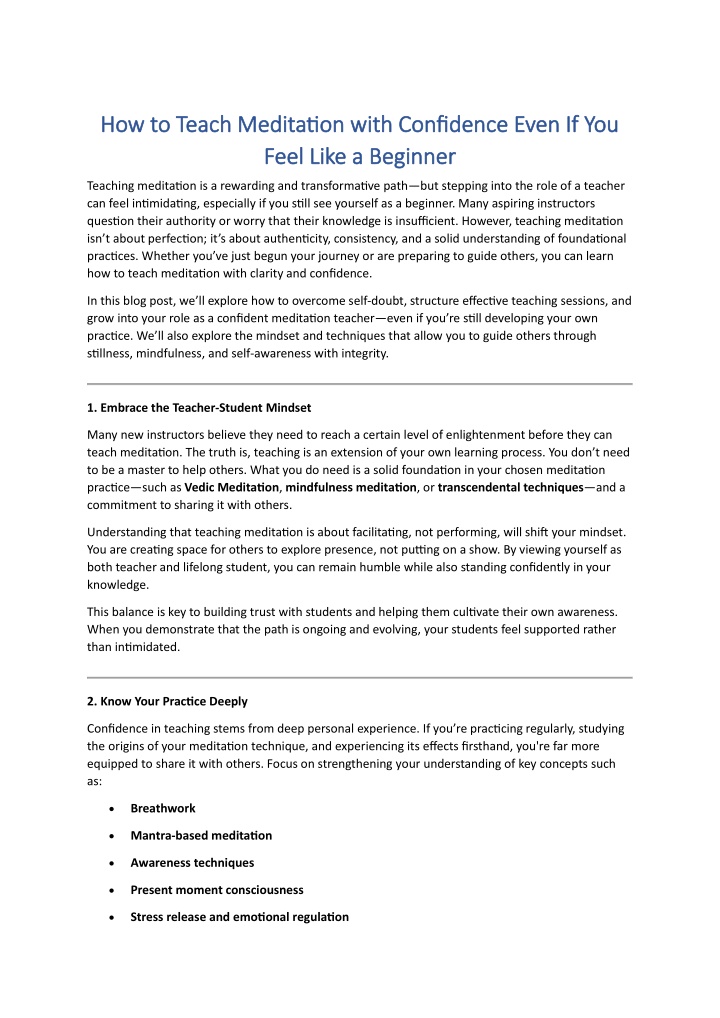
How to Teach Meditation with Confidence Even If You Feel Like a Beginner
Teaching meditation is a rewarding and transformative pathu2014but stepping into the role of a teacher can feel intimidating, especially if you still see yourself as a beginner.
Download Presentation

Please find below an Image/Link to download the presentation.
The content on the website is provided AS IS for your information and personal use only. It may not be sold, licensed, or shared on other websites without obtaining consent from the author. If you encounter any issues during the download, it is possible that the publisher has removed the file from their server.
You are allowed to download the files provided on this website for personal or commercial use, subject to the condition that they are used lawfully. All files are the property of their respective owners.
The content on the website is provided AS IS for your information and personal use only. It may not be sold, licensed, or shared on other websites without obtaining consent from the author.
E N D
Presentation Transcript
How to Teach Meditation with Confidence Even If You How to Teach Meditation with Confidence Even If You Feel Like a Beginner Feel Like a Beginner Teaching meditation is a rewarding and transformative path but stepping into the role of a teacher can feel intimidating, especially if you still see yourself as a beginner. Many aspiring instructors question their authority or worry that their knowledge is insufficient. However, teaching meditation isn t about perfection; it s about authenticity, consistency, and a solid understanding of foundational practices. Whether you ve just begun your journey or are preparing to guide others, you can learn how to teach meditation with clarity and confidence. In this blog post, we ll explore how to overcome self-doubt, structure effective teaching sessions, and grow into your role as a confident meditation teacher even if you re still developing your own practice. We ll also explore the mindset and techniques that allow you to guide others through stillness, mindfulness, and self-awareness with integrity. 1. Embrace the Teacher-Student Mindset Many new instructors believe they need to reach a certain level of enlightenment before they can teach meditation. The truth is, teaching is an extension of your own learning process. You don t need to be a master to help others. What you do need is a solid foundation in your chosen meditation practice such as Vedic Meditation, mindfulness meditation, or transcendental techniques and a commitment to sharing it with others. Understanding that teaching meditation is about facilitating, not performing, will shift your mindset. You are creating space for others to explore presence, not putting on a show. By viewing yourself as both teacher and lifelong student, you can remain humble while also standing confidently in your knowledge. This balance is key to building trust with students and helping them cultivate their own awareness. When you demonstrate that the path is ongoing and evolving, your students feel supported rather than intimidated. 2. Know Your Practice Deeply Confidence in teaching stems from deep personal experience. If you re practicing regularly, studying the origins of your meditation technique, and experiencing its effects firsthand, you're far more equipped to share it with others. Focus on strengthening your understanding of key concepts such as: Breathwork Mantra-based meditation Awareness techniques Present moment consciousness Stress release and emotional regulation
A clear understanding of these principles builds your ability to explain meditation clearly and answer questions with ease. If your chosen method is Vedic Meditation, become fluent in the philosophy and technique behind it. This includes learning how mantras function, the role of consciousness in the process, and the unique benefits of practicing twice daily. Reinforce your learning through regular study of ancient Vedic texts, teacher-led trainings, and immersive workshops. The more grounded you are in your own practice, the more naturally your confidence will grow. 3. Start Small and Stay Structured You don t need to lead large retreats to begin teaching meditation. Start small by offering sessions to friends, small community groups, or one-on-one students. This allows you to refine your communication, gain feedback, and improve your delivery in a low-pressure environment. Structure your sessions clearly, keeping them accessible for beginners. A basic format might include: A brief explanation of what meditation is and isn t Simple breath awareness or mantra guidance A short practice (5 15 minutes) Time for reflection and Q&A Use inclusive language and emphasize that there's no perfect way to meditate just being present is enough. Guide with clarity, speak slowly, and avoid overloading your audience with jargon or complex instructions. When students feel understood and supported, they re more likely to return and deepen their practice. 4. Develop Your Teaching Voice As a meditation teacher, your tone, pacing, and presence matter just as much as your words. Practice speaking calmly, with clarity and intention. Your presence should convey ease and centeredness even if you re still learning to embody it fully. Teaching meditation means modeling the very state you want to inspire in others. Prioritize your daily practice, engage in breathwork, and enter sessions with grounded energy. The more you practice being present while teaching, the more your natural voice will emerge. Consider recording your sessions and reviewing them to assess how you sound and how your guidance flows. Over time, you ll refine your unique teaching style and feel more comfortable guiding a group or individual session. 5. Continue Learning Through Qualified Mentors No matter where you are in your journey, seeking support from experienced mentors is essential. Learning from certified instructors especially those rooted in ancient meditation traditions ensures that your understanding remains accurate, ethical, and impactful.
If you're interested in the Vedic tradition, training with qualified teachers such as Thom Knoles offers a structured path to teaching with confidence. Learning the deeper principles of consciousness, transcendence, and mantra usage will expand both your personal practice and your ability to lead others effectively. Mentorship and structured education are critical steps toward embodying the wisdom you wish to share. Invest in high-quality teacher training to build your foundation, then expand at your own pace. Conclusion: Learn from the Best in Vedic Meditation Teaching meditation with confidence starts with deep personal commitment, continuous learning, and authentic presence. You don t need to be a master you simply need to be consistent, humble, and informed. With the right mindset and guidance, you can empower others to discover the transformative benefits of meditation. Vedic Meditation | Thom Knoles offers a profound path for those who want to learn and teach meditation with integrity. Thom Knoles has taught the principles and philosophy of Vedic Meditation to thousands of people worldwide. Learn what Vedic Meditation can do for you. Start your journey today.

![[PDF⚡READ❤ONLINE] Zen Mind, Beginner's Mind: 50th Anniversary Edition](/thumb/20459/pdf-read-online-zen-mind-beginner-s-mind-50th-anniversary-edition.jpg)
